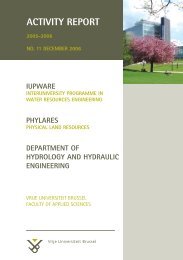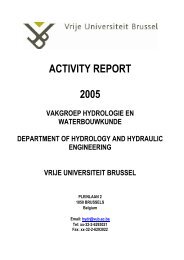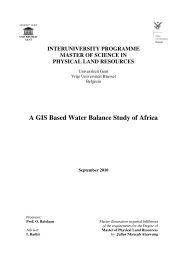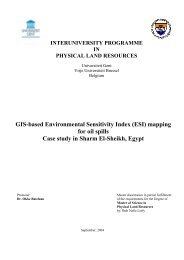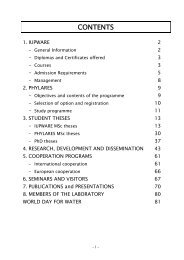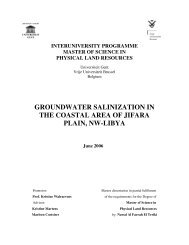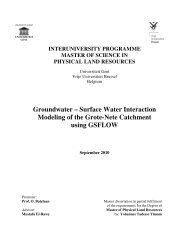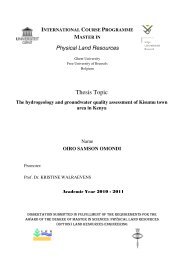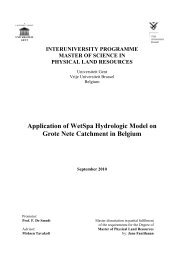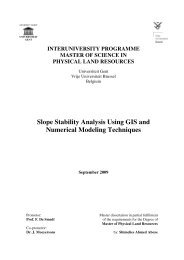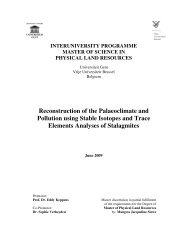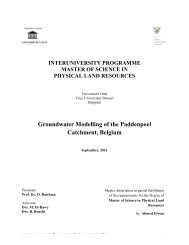Surface Water Interaction Modelling Using Visual MODFLOW and GIS
Surface Water Interaction Modelling Using Visual MODFLOW and GIS
Surface Water Interaction Modelling Using Visual MODFLOW and GIS
- No tags were found...
You also want an ePaper? Increase the reach of your titles
YUMPU automatically turns print PDFs into web optimized ePapers that Google loves.
PHYLARESModel calibration / ch.7__________________________________________________________________________________________46Chapter 7Model calibrationModel calibration determines how well the model results simulate field measurements, such aswater level in wells <strong>and</strong> river gains <strong>and</strong> losses. In this iterative process, model value of inputparameters such as rain recharge <strong>and</strong> hydraulic conductivity are adjusted by trial-<strong>and</strong>-error tobest <strong>and</strong> reasonably match measured data.Minimum <strong>and</strong> maximum values possible for the conceptual model should not be exceeded incalibrating the ground-water model. Calibration is evaluated through the analysis of residualsdesigned to bring the mean of the residuals close to zero, <strong>and</strong> to minimize the st<strong>and</strong>ard deviationof the residuals. The calibration procedure may lead to different solutions for different parametercombination.The degree of fit between model simulations <strong>and</strong> field measurements can be quantified bystatistical means. Statistical analysis for calibration includes the Mean Error (ME), Meanabsolute Error (MAE); Root Mean squared Error (RMSE), <strong>and</strong> Normalized Root Mean SquaredResidual (Normalized RMS). Among these, the RMSE is generally the best calibration indicator(Anderson <strong>and</strong> Woesner, 1992). The error criteria are defined as the error between measuredhead <strong>and</strong> the simulated head.Mean Error is the mean difference between the observed head ( h0) <strong>and</strong> the simulated head (s)h .1n∑ME = ( h − )0n i=1h s(7.1)MAE is the mean of the absolute value of the differences in observed <strong>and</strong> simulated head.MAE =n1∑|h0 − h s|n 1i=(7.2)______________________________________________________________________________________Groundwater – <strong>Surface</strong> water interaction modeling using visual <strong>MODFLOW</strong> <strong>and</strong> <strong>GIS</strong>




